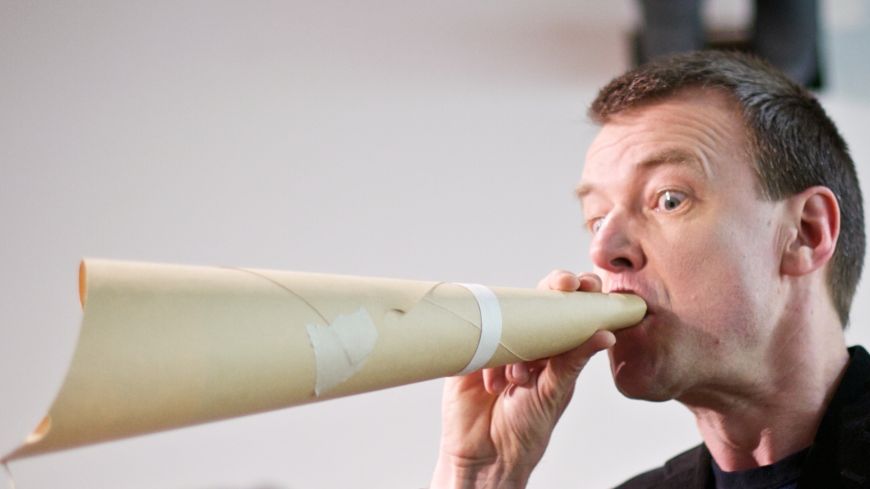
Richard Demarco is not happy. The grand old radical of Edinburgh art is not happy because of what he sees Edinburgh’s festival season has become. “Just a lot of stand-up comedians”, he tells us in a strident introduction to tonight’s performance.
Demarco laments what has happened to the festival since it was set up as a beacon of culture in the post-war years, and reassures a small but perfectly formed audience that what we are about to see is real art. “If you don’t appreciate or understand what Schwitter was doing, then you don’t understand art. This is not just entertainment. This is entertainment plus!”
Kurt Schwitter was a German artist with connections to Dadaism who worked throughout the 1920-30s’ inter-war period. He specialised in visual collage and sound poetry, before being forced into exile from Germany in the mid-thirties due to his “degenerative art”. He finally washed up in the Port of Leith in 1940 and was promptly imprisoned, dying shortly after World War 2’s end.
His Ursonata is a particularly tasking piece of sound art, designed to be a solo undertaking and mapped out into four movements. For this week of performances in Edinburgh, German musician/artist Florian Kaplick has been brought over by Demarco and he fully inhabits the piece.
Sound poetry, in which language itself splinters and fragments through authorial delivery, has a reputation for being difficult. Yet Demarco is right in his determined championing and Kaplick’s rendition of the Ursonata is tremendously effective and entertaining. It is the borderline between music and poetry being softly melted.
The Ursonata was very much a product of its own turbulent time. Written to be performed in German, Kaplick informs non-speakers afterwards of the prevalence of words such as “rocket” and “grim”. There is a sense of despairing absurdity to the piece which is effectively communicated through the guttural glottal stops and decimated punctuation. Looking around the onlookers, several have their eyes closed, lost in this audible process of disintegrating and rebuilding.
Also in the audience is a very friendly and somewhat bewildered dog who occasionally interjects the odd perfectly timed whine into the performance. Taking questions from the audience, Kaplick (an expert on Schwitter) proves himself as enormously knowledgeable and gregarious company, hugely enthusiastic to speak about his work and Schwitter’s history.
The marvellous venue adds to the performance, an old-fashioned tiered wooden lecture theatre in the University of Edinburgh’s old Veterinarian building at the south-east of the Meadows, newly launched as the Summerhall venue. If there is a spirit of the old fringe and festival that Demarco so misses, it is clearly to be found in the labyrinthine corridors of this wonderful new space.
Summerhall have a full programme of theatre and art for the remainder of August although it’s worth going to hang out in the quite spectacular bar area alone. Instead of the much-touted Edinburgh Free Festival (which just seem to be yet more stand-ups who can’t get paying gigs playing in pubs), Summerhall is the real fringe of the Fringe, a place for higher-minded artistic ideals with an infectiously all-inclusive vibe. Let’s wish it well.
Run ended. See www.summerhall.co.uk for further info.

